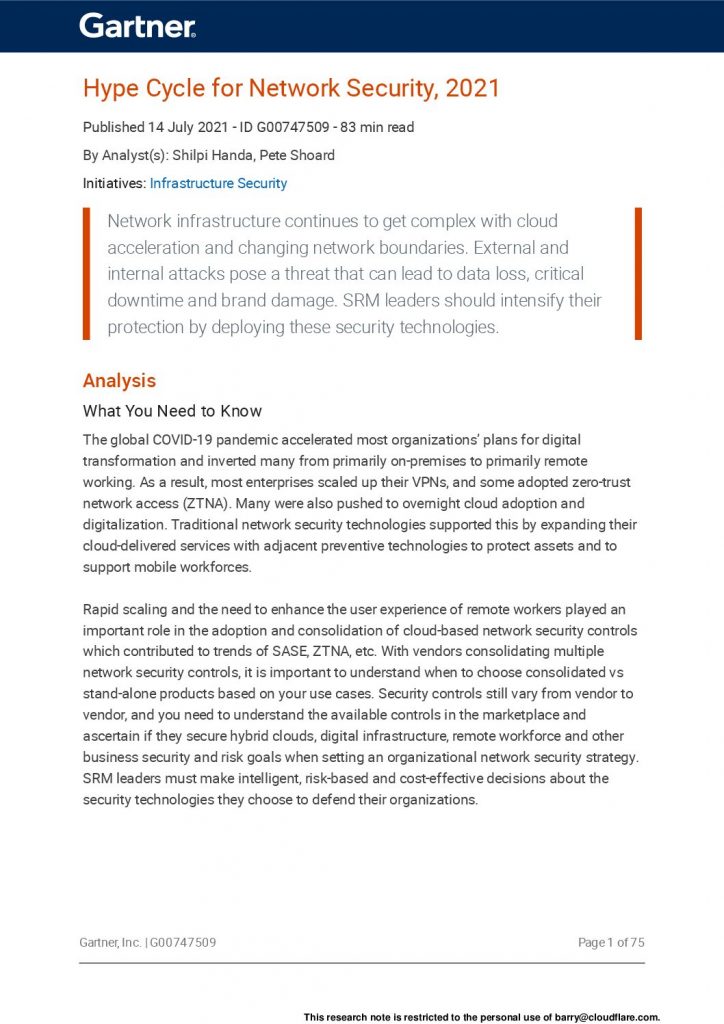Over the last year, organizations have had to transition from primarily on-premises to primarily remote working. As a result, many security teams scaled up reliance on their VPN and began exploring new approaches to network security.
Unfortunately, these teams face a variety of overlapping approaches to choose from. Zero Trust network access (ZTNA), Secure Access Service Edge (SASE) and Security Service Edge (SSE) all offer important benefits and include a variety of associated technologies. What direction should organizations look based on their progress in digital transformation?
We believe The Gartner Hype Cycle for Network Security has the answers. It describes how organizations have digitized and consolidated cloud-based network security controls through technologies like SASE and ZTNA.
Download it now, and you’ll learn:
- Where newly added network security technologies such as SASE and its associated technologies fall on this year’s Hype Cycle.
- The benefits of pursuing a consolidation strategy in network security and the technologies required for security teams to achieve that consolidation.
- The business impact, drivers, obstacles and user recommendations involved in deploying SSE.

































































